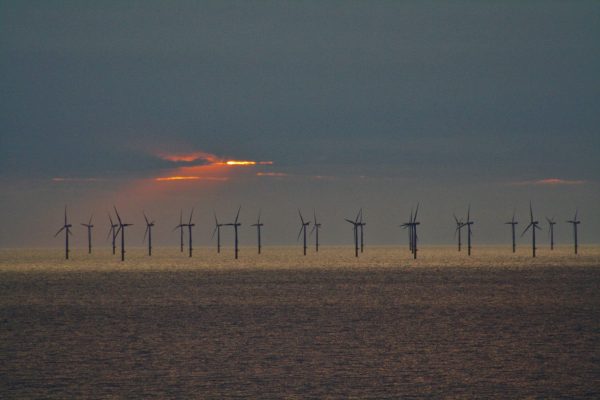More turbines at offshore wind farm in Liverpool Bay
Work has started on a multi million pound scheme to install 32 turbines at the Burbo Bank wind farm in Liverpool Bay, quadrupling the size of the facility.
The foundations for the new turbines have just been installed at the Burbo Bank wind farm in Liverpool Bay.
The Burbo Bank extension project will see 32 new turbines added to the existing 25, which lie 12.2 kilometres off Point of Ayr.
This will increase the size of the wind farm from 10 to 40 square kilometres.
The facility is run by the Danish firm, DONG Energy, which states the extra wind turbines will produce enough electricity for more than 180,000 homes.
The foundations were installed by Van Oord’s heavy-lift vessel ‘Svanen’ – a large floating crane standing 100 metres tall and able to lift more than 8,000 tonnes.
Each of the eight megawatt turbines will be 195 metres tall, nearly twice the size of Liverpool’s iconic Liver Building. They will be installed in the autumn.
Over the next few months, work will continue on preparing for the installation of the offshore substation and the laying of the cables that will connect the turbines to the National Grid.
DONG Energy believes the site on the Burbo Flats at the entrance to the River Mersey is ideal.
“Burbo Bank is exposed to the full force of the wind from the west. The Irish Sea and its shifting sands were once feared by storm driven sailing ships, however the wind and shallow waters now make it an ideal location for offshore wind turbines,” states the company on its website.
The multi million pound Burbo Bank extension is one of four offshore wind farms being constructed by DONG Energy in the UK.
These include the Hornsea Project One offshore wind farm which is being built 120 kilometres off the Yorkshire coast.
The 407 square kilometre wind farm is expected to be operational in 2020 and will be the world’s biggest offshore wind farm once completed.
The Royal Yachting Association has said it will continue to monitor offshore wind farm development in UK waters to “ensure the navigational safety of recreational boating around the coast.”
“We have successfully stopped developers from establishing permanent operational safety or exclusion zones around wind farms that would prevent recreational craft from making passage through them,” it said
The fishing vessel started sinking after it crashed into the wind turbine off the Cumbrian coast. One man sustained injuries… The Marine Management Organisation (MMO) has given the go ahead for the tidal energy farm off St Catherine's Point despite…Three rescued after catamaran hits wind turbine
Approval for tidal energy farm off the Isle of Wight











